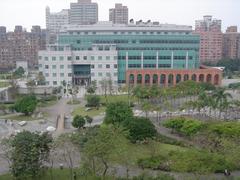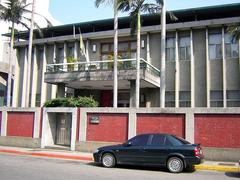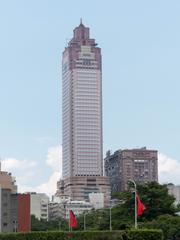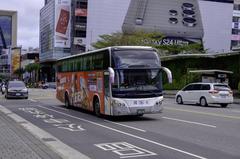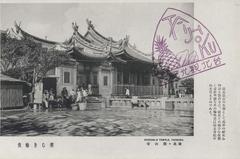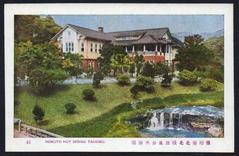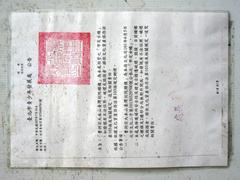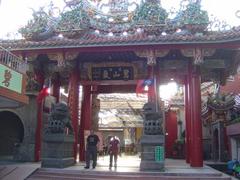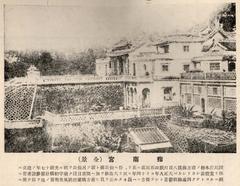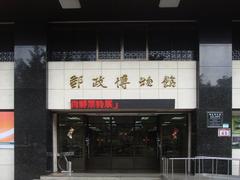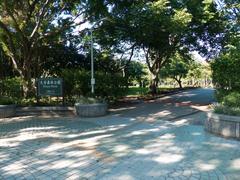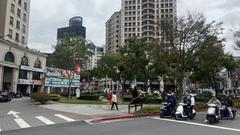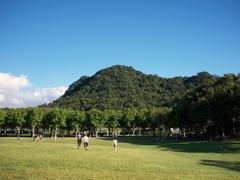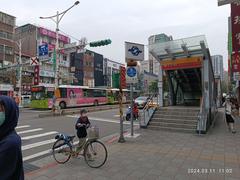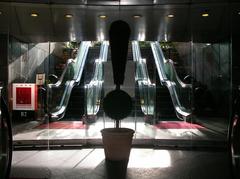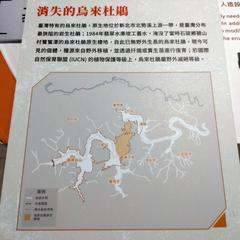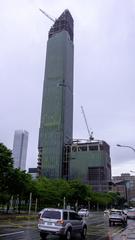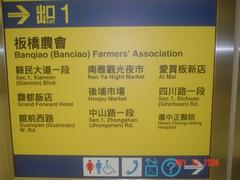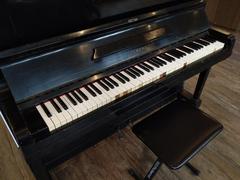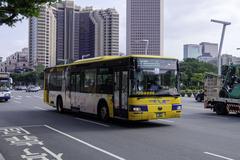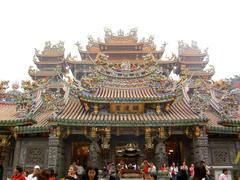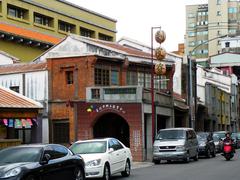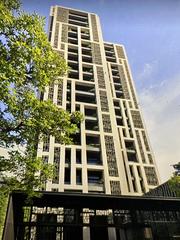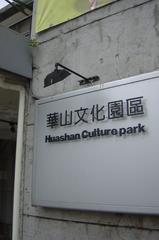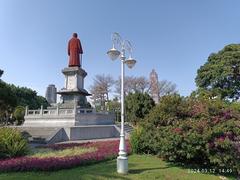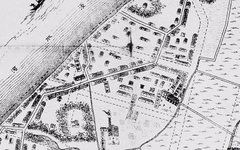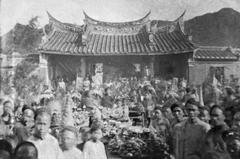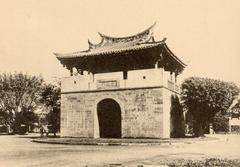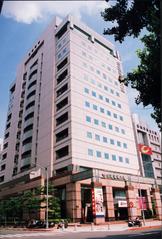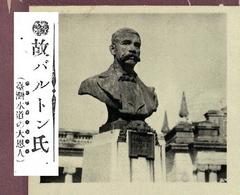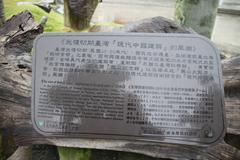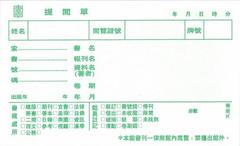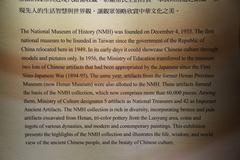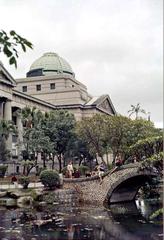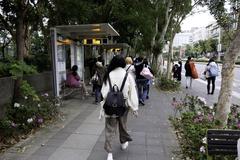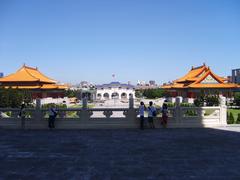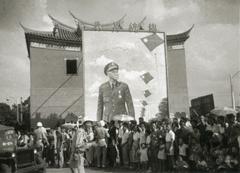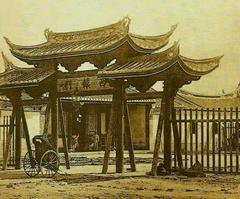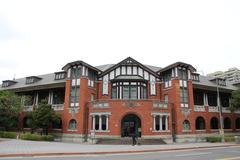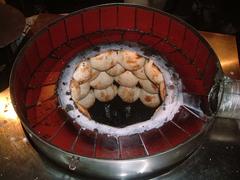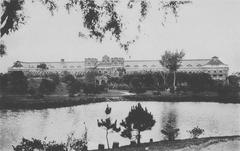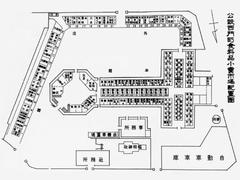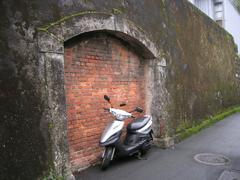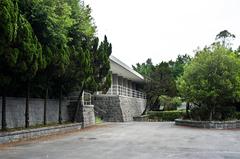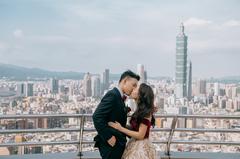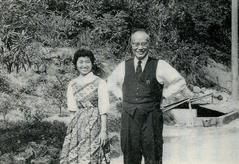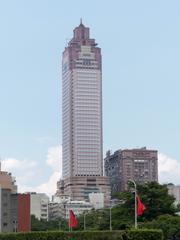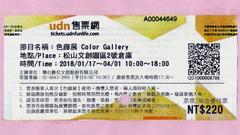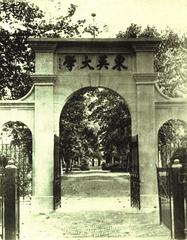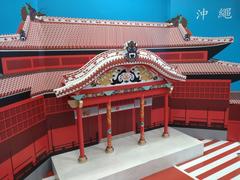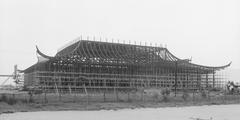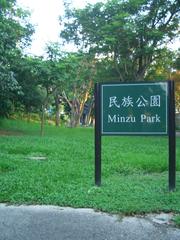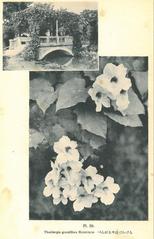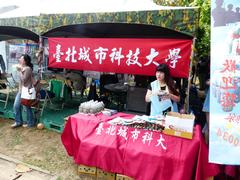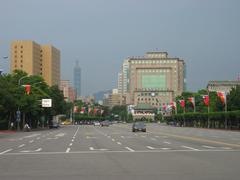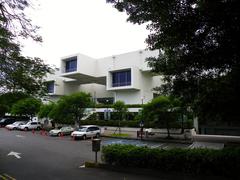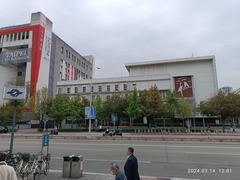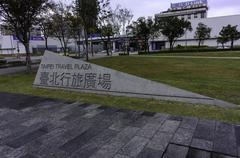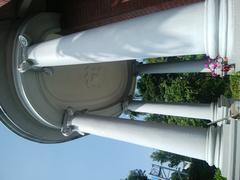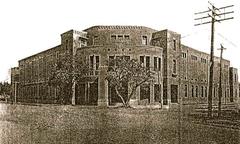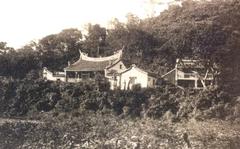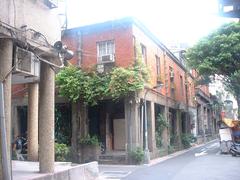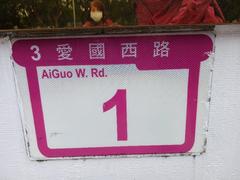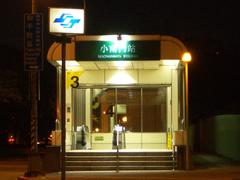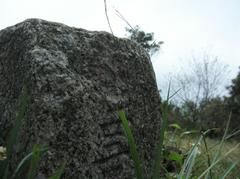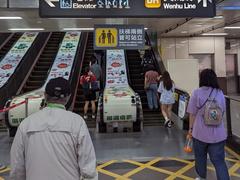Complete Guide to Xingtian Temple Station: Visiting Hours, Tickets, and Nearby Attractions in Taipei
Date: 04/07/2025
Introduction
Xingtian Temple Station (行天宮站), located in the lively Zhongshan District, is your gateway to one of Taipei’s most revered spiritual and cultural landmarks—Xingtian Temple. Opened in 2010 along the Taipei Metro’s Zhonghe–Xinlu (Orange) Line, the station embodies a seamless blend of modern urban transit and deep-rooted Taiwanese Taoist traditions. Xingtian Temple, founded in 1967 and dedicated to Guan Yu (關羽)—a symbol of loyalty and righteousness—is famed for its architectural restraint, environmental initiatives (notably, a ban on incense burning), and role as a bustling center of community life. Each year, millions visit for spiritual reflection, cultural immersion, and vibrant festivals.
This comprehensive guide details Xingtian Temple’s visiting hours, free admission policy, accessibility, and etiquette, as well as insights into the station’s design, community impact, and nearby attractions like Taipei Expo Park and Dadaocheng. Whether your visit is a spiritual pilgrimage, a cultural excursion, or part of your daily commute, this article will help you plan a meaningful and smooth experience in Taipei.
For official information, refer to resources such as the Taipei Metro official site and the Taiwan Tourism Bureau.
Table of Contents
- Introduction
- Development and Urban Context of Xingtian Temple Station
- Historical and Cultural Significance of Xingtian Temple
- Visiting Hours, Tickets, and Essential Information
- Architectural Highlights and Accessibility
- Religious Practices and Visitor Etiquette
- Socio-Economic and Urban Impact
- Nearby Attractions and Experiences
- Travel Tips and Safety
- Special Events and Festivals
- Frequently Asked Questions (FAQs)
- Conclusion and Recommendations
- Useful Links and References
Development and Urban Context of Xingtian Temple Station
Xingtian Temple Station (O09) opened on November 3, 2010, as part of Taipei’s effort to expand efficient urban mobility (Taipei Metro official site). Situated in the dynamic Zhongshan District—a hub for commerce, residences, and tradition—the station serves both commuters and millions of temple visitors each year. Its integration into the extensive Taipei Metro network (over 152 stations by 2025) ensures convenient access to the city’s historical and cultural heart (Taipei Rapid Transit Corporation, 2025).
Historical and Cultural Significance of Xingtian Temple
Founded in 1967, Xingtian Temple honors Guan Yu, the legendary general from the Three Kingdoms era, revered for his loyalty and righteousness. The temple, a hub for both religious devotion and community life, draws visitors seeking blessings, moral guidance, and a window into Taiwanese folk spirituality (Taiwan Tourism Bureau; smile.com.tw). Its unique role extends to the neighborhood’s bustling markets, traditional medicine shops, and vegetarian restaurants—all reflecting the temple’s enduring influence.
Visiting Hours, Tickets, and Essential Information
- Opening Hours: Xingtian Temple is open daily, typically from 4:00 AM to 10:00 PM (smile.com.tw; Trip.com). Early mornings and late evenings are ideal for a tranquil visit.
- Admission: Entry is free; no tickets are required for temple or station access.
- Best Times to Visit: Weekdays and non-festival periods offer quieter experiences. Major festivals—especially Guan Yu’s birthday (24th day, 6th lunar month)—draw large crowds and elaborate ceremonies.
Architectural Highlights and Accessibility
Temple Architecture
Xingtian Temple is noted for its open, welcoming design, with dragon-adorned roofs, red pillars, and a spacious courtyard. The absence of incense and joss paper burning reflects both environmental priorities and a focus on spiritual sincerity (smile.com.tw). The main hall, side halls, and stone benches provide an inviting space for both worship and quiet reflection.
Metro Station Design
The underground Xingtian Temple Station features traditional Chinese motifs in its décor and art installations, including ceramic representations of the “Eight Generals.” Four exits efficiently connect travelers to the temple, markets, and surrounding commercial areas. Accessibility is a priority, with elevators, ramps, tactile paving, and platform screen doors (Taipei Metro Art).
Religious Practices and Visitor Etiquette
Worship and Rituals
- Main Deity: Lord Guan, venerated for integrity and justice, is joined by other Taoist deities in the temple’s syncretic pantheon.
- Rituals: Worshippers bow silently at each altar; elaborate offerings are unnecessary, and spiritual sincerity is emphasized.
- Spiritual Cleansing (收驚): Free ritual performed by volunteers to dispel negative energy; available at a dedicated pavilion.
- Divination (求籤): Visitors may draw fortune sticks, with volunteers assisting in interpretation.
Etiquette
- Dress Modestly: Shoulders and knees should be covered (Agoda).
- Quiet Respect: Keep voices low, avoid disruptive behavior.
- Photography: Allowed in public areas, but avoid photographing rituals or worshippers without permission.
- No Incense Burning: The temple strictly bans incense, candles, and joss paper to maintain air quality (Wikipedia).
Socio-Economic and Urban Impact
The opening of Xingtian Temple Station has spurred local economic activity, increased property values, and encouraged sustainable tourism by promoting public transit. The temple’s ban on incense and paper offerings aligns with broader citywide initiatives for environmental protection (Taipei City Urban Development Department).
Nearby Attractions and Experiences
Explore Taipei’s broader cultural landscape with these nearby destinations:
- Taipei Expo Park: Lush grounds for events and exhibitions.
- Shuanglian Market: Bustling with local foods and crafts.
- Dadaocheng Area: Characterized by heritage architecture and tea houses.
- Ningxia Night Market: Famous for local street food.
- Taipei Fine Arts Museum: A short metro ride away for art lovers.
Travel Tips and Safety
- Metro Hours: 6:00 AM–midnight; EasyCard and single-journey tokens widely accepted (Taipei Travel Geek).
- Facilities: Restrooms, lockers, ATMs, and convenience stores in the station.
- Accessibility: The temple and station are wheelchair-friendly; ramps and accessible restrooms are provided.
- Safety: Platform screen doors and enhanced health protocols are in place (Taipei Metro News). Watch your belongings, especially during festivals.
Special Events and Festivals
- Guan Yu’s Birthday: Temple hosts processions and ceremonies—expect large crowds.
- Lunar New Year: Features lantern displays and special rituals.
- Cultural Festivals: Throughout the year, enjoy music, art, and traditional performances.
Frequently Asked Questions (FAQs)
Q: What are Xingtian Temple’s opening hours?
A: 4:00 AM to 10:00 PM daily.
Q: Is there an entrance fee?
A: No, entry is free.
Q: How do I get there?
A: Take the Taipei Metro Orange Line to Xingtian Temple Station (O09), use Exit 3, and walk 5–8 minutes.
Q: Is the temple accessible for people with disabilities?
A: Yes, with ramps, elevators, and accessible restrooms.
Q: Can visitors participate in rituals?
A: Yes, respectfully observe or join in spiritual cleansing and divination rituals.
Q: Is incense burning allowed?
A: No, the temple prohibits incense and paper offerings.
Q: Are guided tours available?
A: Volunteers assist on-site; guided tours can be arranged through local agencies.
Conclusion and Recommendations
Xingtian Temple and its metro station stand as exemplary models of Taipei’s integration of tradition, innovation, and community. Visitors enjoy free access, long visiting hours, and unique rituals in an environment notable for spiritual sincerity and environmental consciousness. The surrounding district is rich with markets, cultural sites, and vibrant street life, offering a comprehensive Taipei experience.
For a seamless visit:
- Plan ahead, especially around major festivals.
- Respect temple customs and environmental policies.
- Explore nearby attractions to enrich your journey.
Enhance your Taipei adventure with the Audiala app for real-time transit updates, audio guides, and cultural insights. For more on Taipei historical sites and travel tips, browse our related articles and follow us on social media.
Useful Links and References
- Xingtian Temple Official Website
- Taipei Metro Official Website
- Wikipedia: Xingtian Temple Metro Station
- Relax Go Taiwan: Xingtian Temple
- Taiwan Tourism Bureau
- Smile.com.tw: Xingtian Temple
- TravelKing: Xingtian Temple
- Trip.com: Xingtian Temple
- Taipei Travel Geek: MRT Guide
- Agoda: Xingtian Temple Guide
- Taipei City Government
- Taipei Metro Art
